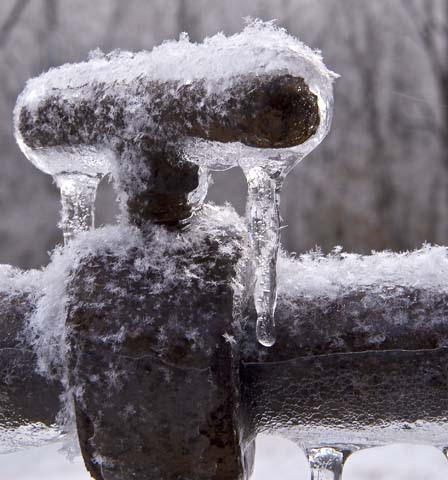Here underneath you will discover more excellent insights related to Preventing and dealing with frozen pipes.

Cold weather can wreak havoc on your plumbing, specifically by freezing pipes. Here's exactly how to stop it from happening and what to do if it does.
Introduction
As temperature levels drop, the danger of icy pipes boosts, possibly leading to expensive fixings and water damages. Understanding just how to avoid icy pipelines is important for homeowners in chilly environments.
Prevention Tips
Protecting prone pipelines
Cover pipelines in insulation sleeves or utilize warmth tape to shield them from freezing temperature levels. Focus on pipelines in unheated or external locations of the home.
Home heating techniques
Keep indoor spaces effectively warmed, particularly areas with pipes. Open closet doors to permit cozy air to distribute around pipelines under sinks.
Exactly how to determine icy pipelines
Seek lowered water flow from faucets, uncommon odors or sounds from pipelines, and visible frost on revealed pipes.
Long-Term Solutions
Structural adjustments
Consider rerouting pipes far from outside wall surfaces or unheated areas. Include extra insulation to attic rooms, basements, and crawl spaces.
Upgrading insulation
Purchase top quality insulation for pipelines, attics, and walls. Correct insulation aids maintain consistent temperature levels and reduces the threat of icy pipes.
Safeguarding Outside Plumbing
Garden hose pipes and outside faucets
Disconnect and drain pipes yard pipes before wintertime. Set up frost-proof spigots or cover exterior faucets with insulated caps.
Comprehending Frozen Pipelines
What triggers pipes to ice up?
Pipes freeze when exposed to temperature levels below 32 ° F (0 ° C) for extended durations. As water inside the pipelines freezes, it expands, taxing the pipe walls and potentially creating them to rupture.
Risks and problems
Icy pipelines can lead to water supply disturbances, home damage, and pricey repair work. Burst pipelines can flood homes and trigger substantial architectural damage.
Indications of Frozen Water Lines
Identifying frozen pipelines early can stop them from rupturing.
What to Do If Your Pipes Freeze
Immediate activities to take
If you think icy pipelines, maintain faucets open to eliminate stress as the ice thaws. Use a hairdryer or towels taken in warm water to thaw pipelines gradually.
Verdict
Protecting against icy pipelines calls for aggressive actions and fast actions. By understanding the reasons, indicators, and safety nets, homeowners can secure their pipes throughout winter.
5 Ways to Prevent Frozen Pipes
Drain Outdoor Faucets and Disconnect Hoses
First, close the shut-off valve that controls the flow of water in the pipe to your outdoor faucet. Then, head outside to disconnect and drain your hose and open the outdoor faucet to allow the water to completely drain out of the line. Turn off the faucet when done. Finally, head back to the shut-off valve and drain the remaining water inside the pipe into a bucket or container. Additionally, if you have a home irrigation system, you should consider hiring an expert to clear the system of water each year.
Insulate Pipes
One of the best and most cost-effective methods for preventing frozen water pipes is to wrap your pipes with insulation. This is especially important for areas in your home that aren’t exposed to heat, such as an attic. We suggest using foam sleeves, which can typically be found at your local hardware store.
Keep Heat Running at 65
Your pipes are located inside your walls, and the temperature there is much colder than the rest of the house. To prevent your pipes from freezing, The Insurance Information Institute suggests that you keep your home heated to at least 65 degrees, even when traveling. You may want to invest in smart devices that can keep an eye on the temperature in your home while you’re away.
Leave Water Dripping
Moving water — even a small trickle — can prevent ice from forming inside your pipes. When freezing temps are imminent, start a drip of water from all faucets that serve exposed pipes. Leaving a few faucets running will also help relieve pressure inside the pipes and help prevent a rupture if the water inside freezes.
Open Cupboard Doors
Warm your kitchen and bathroom pipes by opening cupboards and vanities. You should also leave your interior doors ajar to help warm air circulate evenly throughout your home.

Hopefully you enjoyed our excerpt on 6 Ways to Prevent Frozen Pipes. Thanks a ton for spending some time to browse our blog. I beg you pause to distribute this article if you enjoyed reading it. Thank-you for your time spent reading it.
See Availability